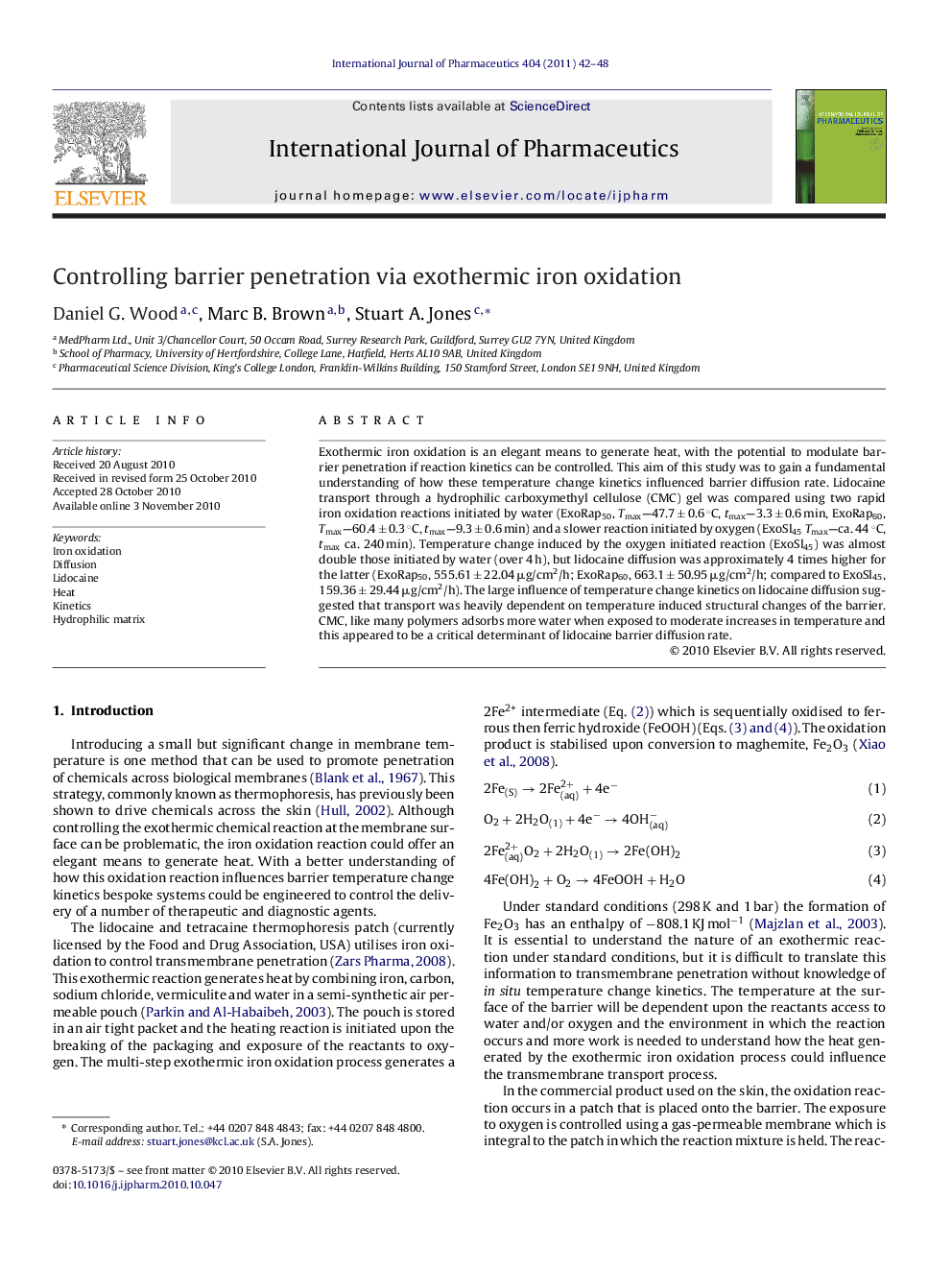| کد مقاله | کد نشریه | سال انتشار | مقاله انگلیسی | نسخه تمام متن |
|---|---|---|---|---|
| 5821237 | 1557438 | 2011 | 7 صفحه PDF | دانلود رایگان |
عنوان انگلیسی مقاله ISI
Controlling barrier penetration via exothermic iron oxidation
دانلود مقاله + سفارش ترجمه
دانلود مقاله ISI انگلیسی
رایگان برای ایرانیان
کلمات کلیدی
موضوعات مرتبط
علوم پزشکی و سلامت
داروسازی، سم شناسی و علوم دارویی
علوم دارویی
پیش نمایش صفحه اول مقاله

چکیده انگلیسی
Exothermic iron oxidation is an elegant means to generate heat, with the potential to modulate barrier penetration if reaction kinetics can be controlled. This aim of this study was to gain a fundamental understanding of how these temperature change kinetics influenced barrier diffusion rate. Lidocaine transport through a hydrophilic carboxymethyl cellulose (CMC) gel was compared using two rapid iron oxidation reactions initiated by water (ExoRap50, Tmax-47.7 ± 0.6 °C, tmax-3.3 ± 0.6 min, ExoRap60, Tmax-60.4 ± 0.3 °C, tmax-9.3 ± 0.6 min) and a slower reaction initiated by oxygen (ExoSl45Tmax-ca. 44 °C, tmax ca. 240 min). Temperature change induced by the oxygen initiated reaction (ExoSl45) was almost double those initiated by water (over 4 h), but lidocaine diffusion was approximately 4 times higher for the latter (ExoRap50, 555.61 ± 22.04 μg/cm2/h; ExoRap60, 663.1 ± 50.95 μg/cm2/h; compared to ExoSl45, 159.36 ± 29.44 μg/cm2/h). The large influence of temperature change kinetics on lidocaine diffusion suggested that transport was heavily dependent on temperature induced structural changes of the barrier. CMC, like many polymers adsorbs more water when exposed to moderate increases in temperature and this appeared to be a critical determinant of lidocaine barrier diffusion rate.
ناشر
Database: Elsevier - ScienceDirect (ساینس دایرکت)
Journal: International Journal of Pharmaceutics - Volume 404, Issues 1â2, 14 February 2011, Pages 42-48
Journal: International Journal of Pharmaceutics - Volume 404, Issues 1â2, 14 February 2011, Pages 42-48
نویسندگان
Daniel G. Wood, Marc B. Brown, Stuart A. Jones,